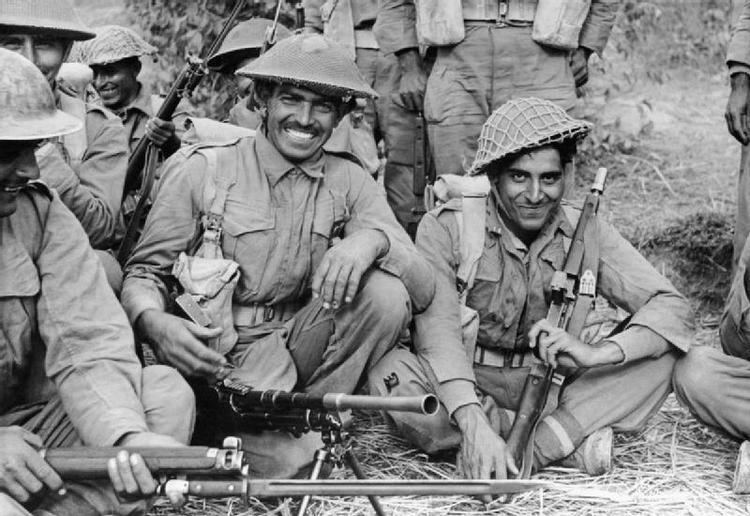The 7th Rajput Regiment was an infantry regiment of the British Indian Army. It was formed in 1922, after the Indian government decided to reform the army moving away from single battalion regiments to multi battalion regiments. After the partition of India in 1947, it was allocated to the new Indian Army and renamed the Rajput Regiment.
During 1936 and 1937 the 3rd Battalion served in South Waziristan (now part of the Tribal Lands in Pakistan). The Battalion was involved in several actions with Afghan insurgents.
A number of Rajput regiments participated in World War II:
The 1st Battalion was in the Arakan during the Burma campaign and then took over the defence of Andaman & Nicobar Islands.
The 2nd Battalion was also in the Arakan area and a number of actions were fought by it. The capture of Point 551, also called Rajput Hill was the most important. The Japanese holding this feature had turned back repeated attacks by other battalions but the Rajputs carried the day winning an IOM, five MC's and two MM's for this action.
The 3rd Battalion shipped by convoy to Egypt in August and September 1940. Their convoy was attacked several times by Italian bombers operating out of Ethiopia. The Battalion Bren guns were deployed for air defense and on one occasion are believed to have brought down an Italian aircraft. The Battalion was at Suez and Egypt and was sent to defend Cyprus after the German attack on Crete as part of Indian 5th Infantry Division's 161 Indian Infantry Brigade. Here, they were mainly used in an anti-parachute role, supported by elements of Australian armour. Later, they returned to Egypt and participated in fierce fighting around Deir el Shein and Ruweisat Ridge including a particularly difficult offensive on 21/22 July 1942 where they lost many casualties including the CO. Later in the year they participated in the Second Battle of El Alamein.
The 4th was also in the Western Desert Campaign at Sidi Barrani and El Alamein and on its return to India was posted to the Kohima front.
The 5th Battalion was in the Battle of Hong Kong. The action against the invading Japanese was short and swift with heavy casualties to the regiment. The regiment along with the British garrison was forced to surrender and the men became POWs and had to undergo great hardships. 130 men of the 5th Rajput were either beaten or starved to death or just died because lack of medical care. The Japanese wanted Captain M.A. Ansari of 5th Rajput to renounce his allegiance to the British, but he refused. For five months he was subjected to brutal beatings and treatment, as a result of which he could not walk. He was then sent to live with the other ranks instead of the officers. Captain Ansari remained true to the regiment and organised a system for helping escapees. He was again put in jail and tortured but refused to be broken. In the end the Japanese executed him. Captain M.A. Ansari was awarded the George Cross for his heroism.
1st battalion ex 2nd Queen Victoria's Own Rajput Light Infantry
2nd battalion ex 4th Prince Albert Victor's Rajputs
3rd battalion ex 7th (Duke of Connaught's Own) Rajputs
4th battalion ex 8th Rajput Infantry
5th battalion ex 11th Rajput Infantry
10th (Training) battalion ex 16th Rajput Infantry (The Lucknow Regiment)

